Notes: The Harborne Railway, running for just over two miles was, authorised by an Act of Parliament dated 28 June 1866. It had been part of a larger scheme put before Parliament in the 1866 session with a projected junction with the London & North Western Railway (LNWR) at Monument Lane and a further junction with the Great Western Railway (GWR) at Soho. Simmons (1986) suggests that the original purpose in building the line might have been to retain for Harborne the industry that was migrating to Smethwick in the northern part of the parish where there were a canal, two railways and four stations. The line was to be a through route connecting with the Halesowen and Bromsgrove Branch Railway (HBBR) at Lapal near Halesowen. The only part of the line which was not opposed by the GWR and Birmingham Corporation (City Council) was the section from the LNWR to Harborne. When the Harborne Railway Company (HRC) withdrew the GWR junction at Soho and the extension from Harborne to Halesowen the Bill was passed. The HRC was allowed five years to construct the branch, although construction was painfully slow, and in 1870 the company was granted a three-year extension. A working agreement between the HRC and the LNWR was drawn up in 1873, with the LNWR operating, staffing, maintaining and providing rolling stock, in return for 50 per cent of the gross receipts. The line opened on 10 August 1874 and it enabled the residents of the already established suburb located in the area of Ickniedld Port Road to travel to and from the centre of Birmingham.
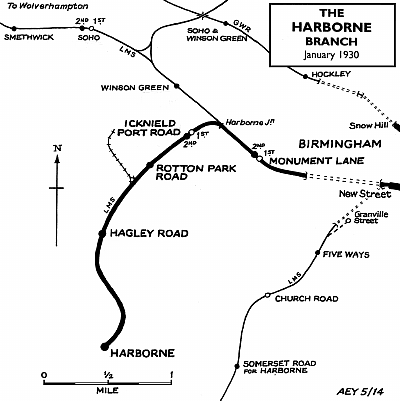 The 2nd station at Icknield Port Road opened during 1897 and replaced the original station on the opposite side of Icknield Port Road. The new facility was reached via a short ramp from Icknield Port Road and comprised a lengthier platform than the original with extremely unpretentious single-storey buildings all within an excavated section of the cutting and with a large retaining wall around them. A brick-built store had a pent roof, sloping down towards the platform, and the other three buildings are thought to have been of timber construction with pitched roofs. The facilities provided were a booking office, gents’ toilets and ladies’ waiting room. The 2nd station at Icknield Port Road opened during 1897 and replaced the original station on the opposite side of Icknield Port Road. The new facility was reached via a short ramp from Icknield Port Road and comprised a lengthier platform than the original with extremely unpretentious single-storey buildings all within an excavated section of the cutting and with a large retaining wall around them. A brick-built store had a pent roof, sloping down towards the platform, and the other three buildings are thought to have been of timber construction with pitched roofs. The facilities provided were a booking office, gents’ toilets and ladies’ waiting room.
During the first few years of operation the line was a financial success, but this was not to continue. In 1879 the company went into Chancery owing to being petitioned by the rent charge holders with a Receiver being appointed by the Court of Chancery on 26 July of that year. It was not until 31 December 1900 that the company was released from Chancery having paid off all its debts. In the meantime, the LNWR had made several abortive attempts to purchase the line outright but was continually rebuffed by the owners. Dividends paid by the company were never high, although during the period 1919 to 1922 a dividend of 3 per cent was paid.
The line enjoyed its most intensive passenger service in the years prior to World War I; the 1910 timetable showing 30 up and down workings on weekdays every hour from 6.45am until 10.45pm. This made the line the busiest suburban route in Birmingham and was a very early example of regular interval working. Many of the residents along the branch used it not only to travel to work in the morning and back in the evening, but the short journey and frequent service enabled them to return home for lunch. To placate the Hagley Road residents there was still no Sunday service.
The frequent service continued until the end of World War I when three factors started to affect passenger numbers, although the first two had been in operation for several years. The first was the 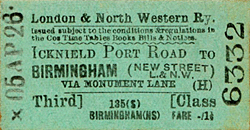 LNWR’s practice of holding the branch train at the junction with the main line even if an express train was late. This delay was followed by the mandatory ticket inspection stop at Monument Lane station, as New Street was an ‘open’ station. As a result the 7-minute journey from Icknield Port Road to Birmingham would often take considerably longer. The final factor came in the shape of competition from the local electric tram car route 34 running along Icknield Park Road and directly passing the station entrance. LNWR’s practice of holding the branch train at the junction with the main line even if an express train was late. This delay was followed by the mandatory ticket inspection stop at Monument Lane station, as New Street was an ‘open’ station. As a result the 7-minute journey from Icknield Port Road to Birmingham would often take considerably longer. The final factor came in the shape of competition from the local electric tram car route 34 running along Icknield Park Road and directly passing the station entrance.
| Up trains July 1922 |
Destination |
Down trains July 1922 |
Destination |
| 5.45am |
Birmingham New Street |
6.42am |
Harborne |
| 6.29am |
Birmingham New Street |
7.29am |
Harborne |
| 7.20am |
Birmingham New Street |
10.02am |
Harborne |
| 7.37am |
Birmingham New Street |
12.17pm |
Harborne |
| 8.14am |
Birmingham New Street |
12.57pm SO |
Harborne |
| 8.29am |
Birmingham New Street |
1.07pm SX |
Harborne |
| 8.42am |
Birmingham New Street |
1.22pm SX |
Harborne |
| 8.59am |
Birmingham New Street |
1.34pm SO |
Harborne |
| 9.26am |
Birmingham New Street |
2.15pm |
Harborne |
| 10.43am |
Birmingham New Street |
3.17pm SO |
Harborne |
| 12.49pm SX |
Birmingham New Street |
4.12pm |
Harborne |
| 1.03pm SO |
Birmingham New Street |
4.57pm SX |
Harborne |
| 1.55pm SX |
Birmingham New Street |
5.22pm |
Harborne |
| 2.05pm SO |
Birmingham New Street |
5.47pm SX |
Harborne |
| 2.20pm SX |
Birmingham New Street |
6.07pm SO |
Harborne |
| 3.04pm |
Birmingham New Street |
6.27pm SX |
Harborne |
| 4.46pm |
Birmingham New Street |
6.57pm |
Harborne |
| 6.37pm |
Birmingham New Street |
7.22pm SX |
Harborne |
| 7.31pm |
Birmingham New Street |
7.47pm |
Harborne |
| 8.26pm |
Birmingham New Street |
8.37pm |
Harborne |
| 9.15pm |
Birmingham New Street |
9.37pm |
Harborne |
| 10.15pm |
Birmingham New Street |
10.07pm |
Harborne |
The time taken by the trains to reach New Street prompted the travelling public to refer ironically to their service as ‘The Harborne Express’. The HRC fought back against the road competition with a price war, and this continued when, at the Grouping of 1923, the line became property of the London Midland & Scottish Railway (LMS). The LMS reduced prices so much that by the early 1930s a day return from Harborne to Birmingham cost as little as 3d (1.25p).
Icknield Port Road was an early casualty of the tramcar competition and would be the first station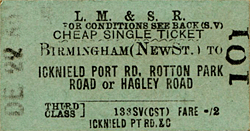 along the line to close on 18 May 1931. Although station closures were uncommon in the pre-World War II days, little comment has survived on this particular closure. The platform and station building would be demolished shortly after closure. The line was officially closed on 3 November 1963 following the passage of the final railtour to visit the line on 2 November with a final pick up freight operating to collect wagons on 3 November and was lifted shortly after. along the line to close on 18 May 1931. Although station closures were uncommon in the pre-World War II days, little comment has survived on this particular closure. The platform and station building would be demolished shortly after closure. The line was officially closed on 3 November 1963 following the passage of the final railtour to visit the line on 2 November with a final pick up freight operating to collect wagons on 3 November and was lifted shortly after.
Today there is no evidence that a station ever existed here as the cutting in which the line ran has been completely infilled. The overbridge on Icknield Port Road still exists, but only the bridge parapets are visible with the area around it incorporated within a park.
Sources:
See also:
Monument Lane 1st, Monument Lane 2nd, Icknield Port Road 1st, Rotton Park Road, Hagley Road & Harborne |


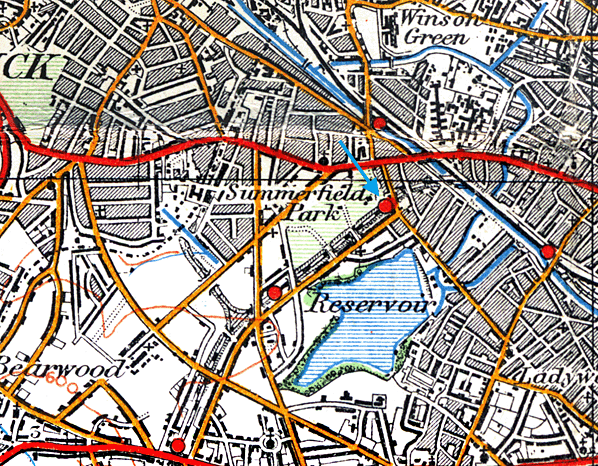
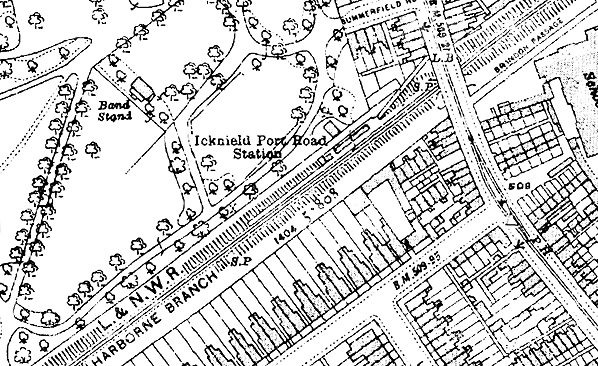
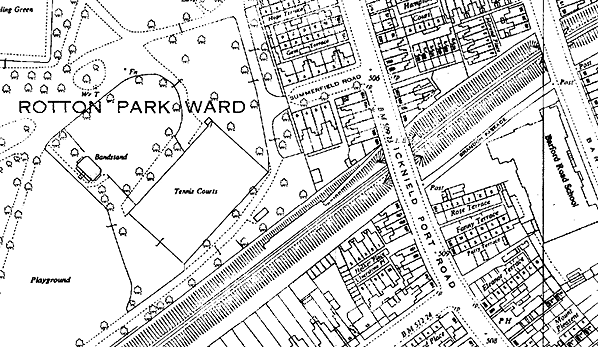
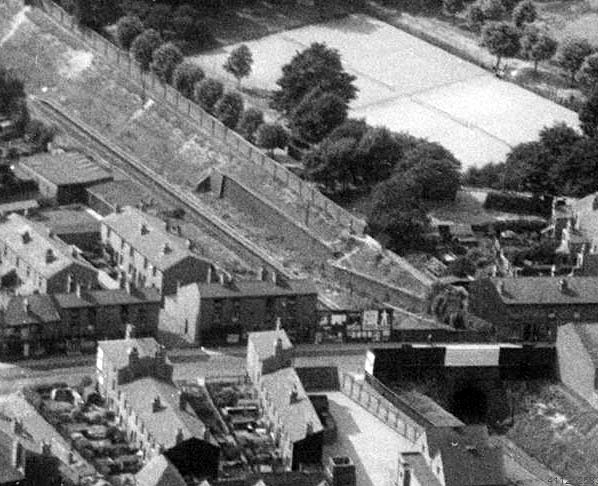
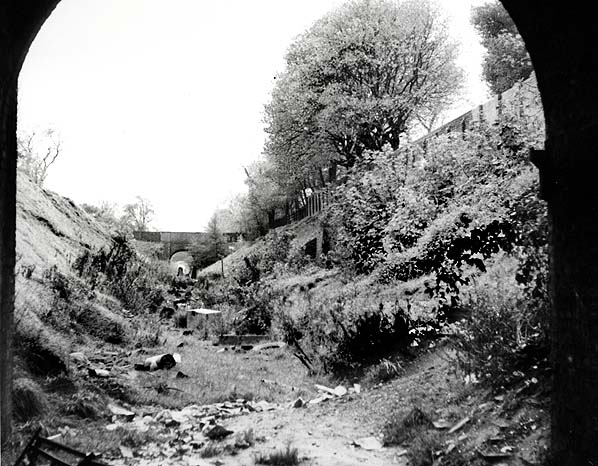
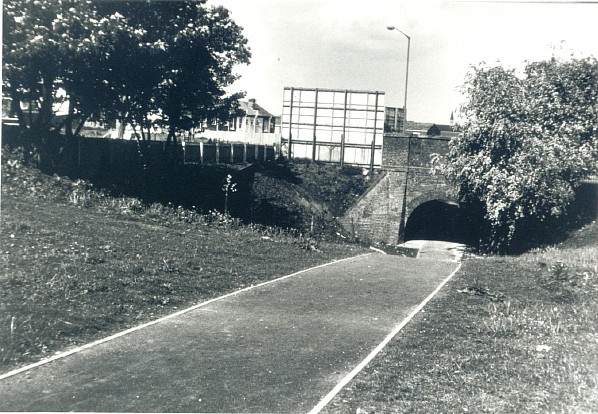
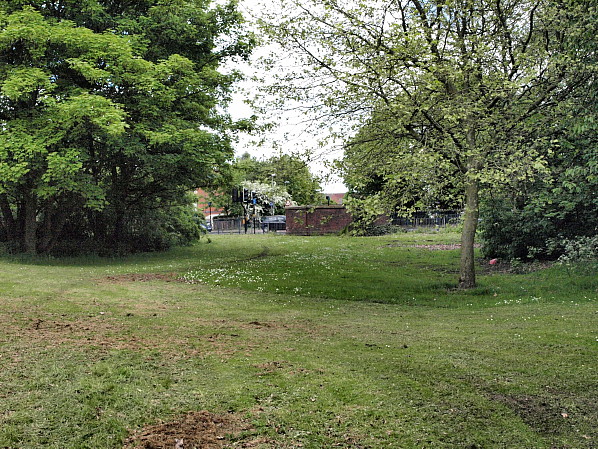
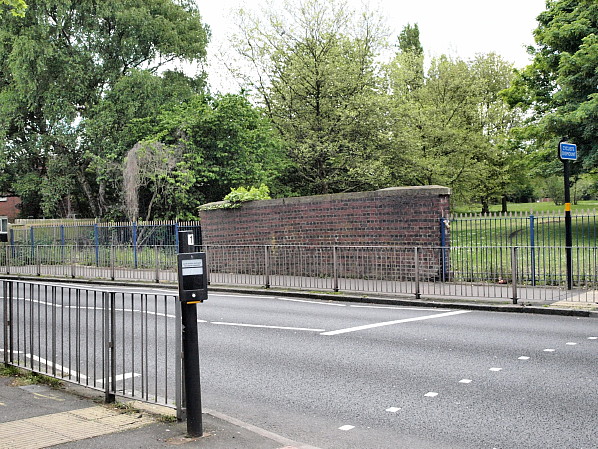
 The 2nd station at Icknield Port Road opened during 1897 and replaced the original station on the opposite side of Icknield Port Road. The new facility was reached via a short ramp from Icknield Port Road and comprised a lengthier platform than the original with extremely unpretentious single-storey buildings all within an excavated section of the cutting and with a large retaining wall around them. A brick-built store had a pent roof, sloping down towards the platform, and the other three buildings are thought to have been of timber construction with pitched roofs. The facilities provided were a booking office, gents’ toilets and ladies’ waiting room.
The 2nd station at Icknield Port Road opened during 1897 and replaced the original station on the opposite side of Icknield Port Road. The new facility was reached via a short ramp from Icknield Port Road and comprised a lengthier platform than the original with extremely unpretentious single-storey buildings all within an excavated section of the cutting and with a large retaining wall around them. A brick-built store had a pent roof, sloping down towards the platform, and the other three buildings are thought to have been of timber construction with pitched roofs. The facilities provided were a booking office, gents’ toilets and ladies’ waiting room. LNWR’s practice of holding the branch train at the junction with the main line even if an express train was late. This delay was followed by the mandatory ticket inspection stop at Monument Lane station, as New Street was an ‘open’ station. As a result the 7-minute journey from Icknield Port Road to Birmingham would often take considerably longer. The final factor came in the shape of competition from the local electric tram car route 34 running along Icknield Park Road and directly passing the station entrance.
LNWR’s practice of holding the branch train at the junction with the main line even if an express train was late. This delay was followed by the mandatory ticket inspection stop at Monument Lane station, as New Street was an ‘open’ station. As a result the 7-minute journey from Icknield Port Road to Birmingham would often take considerably longer. The final factor came in the shape of competition from the local electric tram car route 34 running along Icknield Park Road and directly passing the station entrance.
 along the line to close on 18 May 1931. Although station closures were uncommon in the pre-World War II days, little comment has survived on this particular closure. The platform and station building would be demolished shortly after closure. The line was officially closed on 3 November 1963 following the passage of the final railtour to visit the line on 2 November with a final pick up freight operating to collect wagons on 3 November and was lifted shortly after.
along the line to close on 18 May 1931. Although station closures were uncommon in the pre-World War II days, little comment has survived on this particular closure. The platform and station building would be demolished shortly after closure. The line was officially closed on 3 November 1963 following the passage of the final railtour to visit the line on 2 November with a final pick up freight operating to collect wagons on 3 November and was lifted shortly after.
 Home Page
Home Page